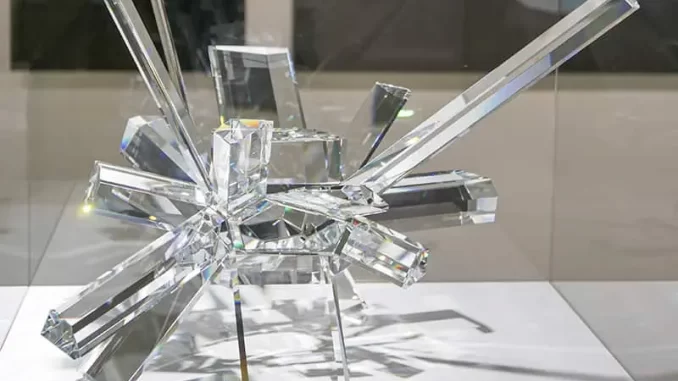
Swarovski crystals are known for their impeccable quality, stunning sparkle, and wide range of uses. From jewelry to home decor, these crystals have become popular for adding glamor and luxury to everyday life. Not only are Swarovski crystals visually stunning, but they also hold sentimental value for many people. Whether it’s a piece of jewelry passed down from a loved one or a decorative item that holds special memories, Swarovski crystals capture and preserve important moments in life.
This Austrian brand has been synonymous with high-quality crystal, luxury jewelry, and elegant home decor for years. However, as their popularity has grown, so too has the market for imitations and fakes. If you’re in the market for Swarovski crystals, it’s important to know how to distinguish between genuine Swarovski crystals and imitations. Here, we will discuss some key ways to identify original Swarovski crystals.
Table of Contents
Examine for Quality Mark
Swarovski crystals are made in Austria, and each crystal has a quality mark that proves its authenticity. One of the easiest ways to determine if a crystal is genuine is by looking for the Swarovski logo. The logo is an iconic swan etched onto each genuine Swarovski crystal. You can usually find the logo on the bottom of the crystal, but it may also be etched onto the side or top. It may be a fake crystal if you cannot see the quality mark.
Inspect the Facets
Swarovski crystals are known for their precision-cut facets, which create a sparkling effect. If you’re examining a crystal up close, look at the edges of the facets. As such, genuine Swarovski crystals will have sharp, clean edges, while imitations may have rough edges or be unevenly cut.
Check the Weight
Just like every authentic gem, genuine Swarovski crystals are made from high-quality materials, which gives them a certain weight; hence they are heavier than imitations. If you have two identical crystals and one feels lighter than the other; the lighter one is likely an imitation. Fake crystals are often made from plastic or glass, which makes them lighter than genuine Swarovski crystals.
Look for Color Consistency
Swarovski crystals are known for their consistency in colors with each color having a unique vibrancy and depth. However, imitations may not match the brilliance and intensity of genuine Swarovski crystals. If you’re looking at a strand of crystals, ensure the color is consistent throughout. If there are any variations in color, then the crystals may not be genuine.
Check for Bubbles or Scratches
Genuine Swarovski crystals are free from bubbles and scratches. If you see any bubbles or scratches on the crystal, then it may not be genuine. The edges of each facet should be sharp and well-defined, with no rough spots or scratches and should also be free of bubbles, cracks, or other imperfections.
Consider the Price
No real gem comes cheap and Swarovski crystals are just the same. While Swarovski crystals are known for their exceptional quality, they are also priced accordingly. If you come across a crystal that seems too good to be true regarding price, it may be a fake. Be wary of heavily discounted or bargain-priced Swarovski crystals, as they may not be the real deal.
Examine the Unique Seal Tag
One of how Swarovski ensures the quality of their crystals is by including a unique 16-digit code on each seal tag. This code can be checked online, allowing customers to verify the authenticity of their Swarovski crystals and ensure that they have received a genuine product. The unique 16-digit code on each Swarovski seal tag allows customers to verify the authenticity of their crystal by entering the code on the Swarovski website. This code is unique to each crystal and cannot be replicated, ensuring customers insight software receive a genuine Swarovski product.
Look at the Packaging
Authentic Swarovski crystals come in high-quality packaging designed to protect the crystal and showcase its beauty. The packaging should be well-designed and branded with the Swarovski logo. If the packaging looks cheap or poorly made, it may be a sign that the crystal inside is not the real deal.
Conclusion
By following these tips and examining your Swarovski crystals, you can ensure that you are purchasing the real thing. If you’re purchasing from an online retailer, check that the retailer is an authorized Swarovski distribution partner. These retailers are certified by Swarovski to sell their crystals. This way you can be certain that your purchase contains genuine Swarovski crystals which you can treasure for years to come.

Leave a Reply